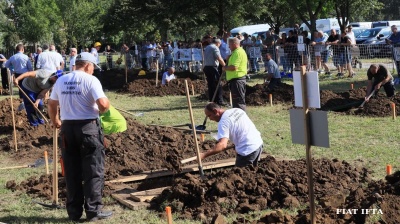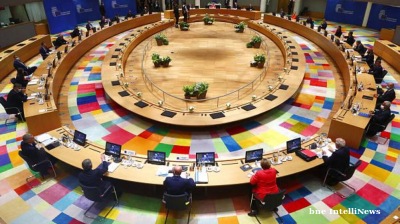Hungary’s demographic situation is set to worsen in the coming decades and the country’s population will decline below 9mn by 2043 compared to 9.63mn at present and after peaking at 10.7mn in 1980, liberal online news site 444.hu writes on September 14 ahead of two-day Demographic Summit in Budapest.
The number of children born in Hungary is falling each year, and the number of women of childbearing age has fallen by 20% in the past 20 years, President Katalin Novak said in an interview published before the summit. Without an increase in birth rates, Hungary's future is in danger, she added.
The natural population loss in Hungary came to 44,653 last year compared with 62,705 in 2021, which was largely due to the pandemic, according to the latest census completed in 2022. The pandemic hit Hungary hard, with 48,000 losing their lives in 2021 and 2022.
The natural population loss since the last census in 2011 was 464,000. This was mitigated by a net influx of 131,000 immigrants, mainly from nearby countries, bringing the total population decline over 11 years to 333,000.
The government has long advocated a "procreation over immigration" approach to deal with demographic decline and introduced a string of family support measures, and it took credit for the improvement in the fertility rate, which has grown to over 1.5 from 1.23 since 2011.
The birth rate had been increasing up until 2021 but has reversed in the past few years, due to age demographics as the children of baby boomers (the so-called Ratko generation in Hungarian, named after the hardline anti-abortion minister in 1949-1953) born between 1945-1953, are now past fertility age.
The forecasts are disheartening and foreshadow an accelerating decline in population, as well as a severe ageing of the population.
By 2043, Hungary's population will fall below 9mn and a quarter of them (24.9%) will be over 65 compared to 20% at present. The share of population older than 70 will grow from 13% in 2022 to over 20%. In more than 20 years, the share of young people below 15 will fall to 14.9% from 15.7% at present.
The decline in the number of the working-age population (20-60 years) is even more pronounced, falling from nearly 55% to 50%. This poses huge challenges for Hungary’s labour market, which is already struggling to meet the growing labour needs of new factories.
According to the labour ministry’s optimistic scenario, the number of working-age people will fall by around 300,000 by 2030. The dire labour shortage in the industry is forcing Viktor Orban’s government to change its anti-immigration rhetoric
The prime minister in March at an economic forum said the country will need at least 500,000 workers to meet growing industrial capacities in the vehicle and related EV battery sectors. The government has eased labour rules for third-country nationals that will pave for the arrival of tens of thousands of guest workers from China, Mongolia, India and the Philippines. This has already created tensions in some rural areas. To quell the discontent of locals, a mayor of a small Hungarian spa town called for residents not to let their homes to Asian workers.
The 5th Budapest Demographic Summit will be attended by heads of state and government, Serbian President Aleksandar Vucic and Italian leader Giorgia Meloni as well as Nobel laureate economist James Hackman, psychologist Jordan Peterson and inspirational speaker Nick Vujicic and religious leaders, opinion leaders, media personalities, NGO leaders from four continents.
News

Trump mistakes Armenia for Albania for the third time at UK press conference
US president says he brought peace to “Aberbaijan” and Albania as he touts his peacemaker credentials during UK state visit.

Iran conducts evening ballistic missile test at Semnan facility
Iran conducts evening ballistic missile test at Semnan range with Sejjil-class system, residents report dramatic launch amid heightened security around military facility.

Pakistan gives Saudi Arabia a landmark Article 5 collective security guarantee
In what is likely to be a game-changing decision, Pakistan, a nuclear power, has given Saudi Arabia an Article 5-like collective security guarantee.
_1758207765.jpg)
Latin America's development gains under threat as one in four live in poverty, UN report finds
UNDP warns of stagnation and rising vulnerability across the region amid "overlapping crises".




